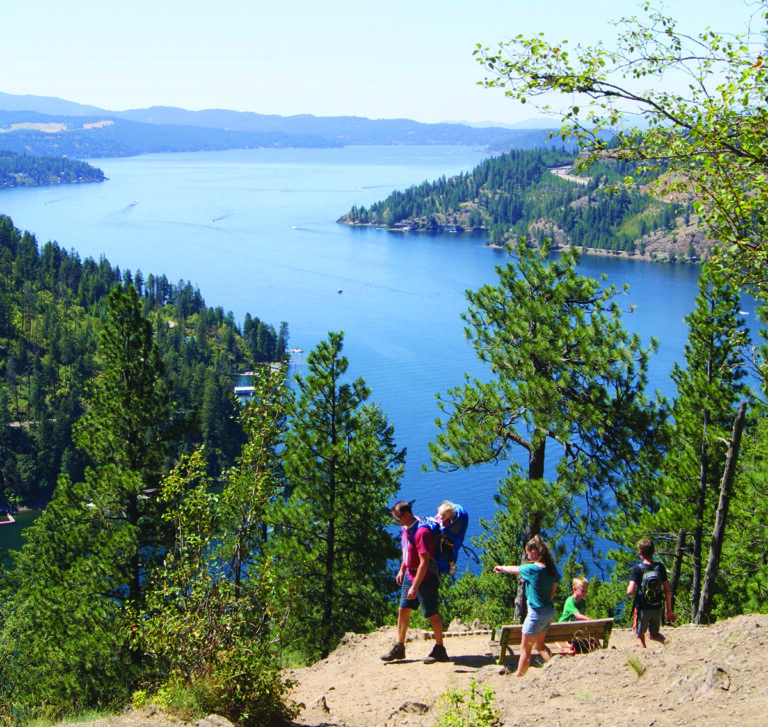Today’s Wandermere Golf Course, located in the Little Spokane River Valley north of Spokane, is perhaps best known for, well, golf. The property has an interesting history, however, thanks to the Ross family of Spokane, who dreamed of creating a year-round recreational playground. In the 1930s, they decided the place wouldn’t be complete without a ski jump.
The art of ski jumping had recently caught on in Spokane, and construction on the Wandermere Ski Hill began in 1932. The pine-filled hillside above the golf course was cleared via the modern method of the day—a team of horses. The Ross family spared no energy with planning, bringing renowned engineer and president of the Northwest Ski Association Peter Hostmark in on the project. They cleared the hill, structured a 34-degree angle, and made plans to show it off: The 700-foot ski hill would be introduced to the world of competitive ski jumping on Jan. 15, 1933. It was anticipated to provide a max jump distance of 185 feet.

The Wandermere Ski Hill, which had relatively low altitude, faced a lack of snow just before the scheduled competition. It was the sort of problem that didn’t intimidate a dreamer; to pack the slope, workers used a car and sled to pull snow from the shaded areas of the Wandermere Golf Course. They put straw on the hillside first to help the snow stick. Large piles of hay were also placed at the end of the hill to act as “brakes” for skiers, who were meant to dive into the hay for a safe stop. To the top skiers of the time, it must have looked like a whole lot of fun.
Skiers traveled in from across the Pacific Northwest and Canada for the big day. Despite being an event with entry fees held during the Great Depression, 22,000 people came to watch. Perhaps they’d heard the “brakes” were hay bales. The crowd caused the largest traffic jam that Spokane had seen to date.
Competitors were judged on both distance and form, but strong winds prevented skiers from making top distances. Still, it had to be entertaining to watch the skiers land, as they clocked speeds up to 100 miles per hour by the bottom of the hill.

A competition was planned for the following year, with the goal of being bigger and better. The Wandermere hill was carved out that summer so it was even steeper, and scaffolding was added to extend the jump runway. Once again, however, there wasn’t enough snow by the competition. Snow was shipped in via train from the Cascade Mountains, which proved a pricey solution. The 1934 competition went on, but the snow was wet and slow.
In the years that followed, the Wandermere Ski Club was formed, a ski lodge was built, and two smaller ski hills were built for recreational skiing and ski jumping. Another ski jump competition took place at Wandermere in 1938. Wandermere hoped to host the 1939 Olympic trials, but the 1940 Winter Olympics were cancelled due to World War II. The Wandermere ski jump event lost momentum after that, and they hosted only one more competition in the 1950s. Today, the Wandermere Ski Hill has been reclaimed by nature.
For more on the history of Wandermere, read Wandermere: Legacy on the Little Spokane River, written by local Ross-family-descendant Ty Brown. Historical information from this book was used for this article.












